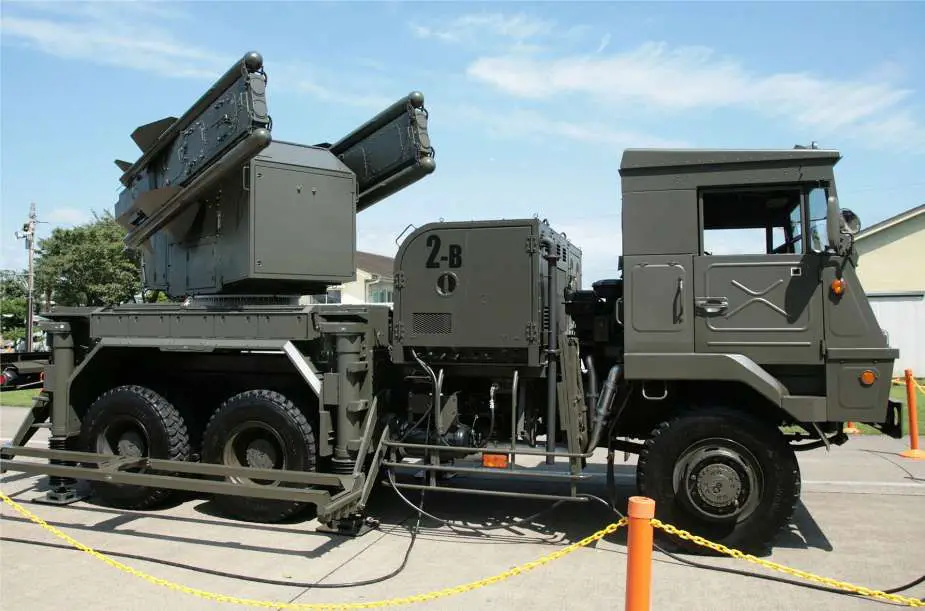Breaking News
Philippines Requests Acquisition of Phased-Out Japanese Air Defense Missile Systems.
Former Japanese Defense Minister Onodera Itsunori confirmed that the Philippines has formally requested the sale or transfer of Japanese-made air defense missile systems. The announcement was made public through the X account of Max Montero on July 10, 2024, highlighting the ongoing defense collaboration between the two countries.
Follow Army Recognition on Google News at this link

The Type 81 could be one of the Japanese air defense systems that Japan could deliver to the Philippines. (Picture source: Wikimedia)
The defense relationship between Japan and the Philippines has significantly strengthened in recent years, driven by shared concerns over regional security and China's assertiveness in the South China Sea. Both nations have enhanced their strategic cooperation through various agreements, joint military exercises, and defense equipment transfers. Japan has provided the Philippines with patrol vessels to bolster its maritime capabilities, while both countries have conducted joint naval exercises to improve interoperability and readiness. This growing partnership reflects a mutual commitment to maintaining stability and security in the Indo-Pacific region.
In an exclusive interview, Onodera revealed that the Japan Self-Defense Forces (JSDF) are poised to retire several missile systems, creating an opportunity for their transfer to allied nations. Among the systems slated for retirement are the Type 81 and the Improved HAWK surface-to-air missile systems. Additionally, the JSDF's newer Type 11 and Type 03 missile systems have also been identified as potential candidates for sale.
The Type 81 Surface-to-Air Missile (SAM) system, a mainstay in Japan’s air defense arsenal since the early 1980s, is designed to counter aircraft and cruise missiles. The Improved HAWK, a more advanced version of the original HAWK missile system, has been a critical component of Japan’s mid-range air defense strategy.
The Type 11 and Type 03 missile systems represent more recent advancements in Japan’s air defense capabilities. The Type 11 is known for its enhanced mobility and rapid deployment capabilities, while the Type 03 offers improved accuracy and range, making it a formidable option for protecting key installations and urban areas.
This move comes amid increasing geopolitical tensions in the Asia-Pacific region, with both Japan and the Philippines seeking to bolster their defense postures. The Philippines has been actively modernizing its military, seeking advanced technologies and systems to enhance its defensive capabilities in response to growing regional threats.
The potential transfer of these missile systems underscores the deepening defense cooperation between Japan and the Philippines. It also reflects Japan’s broader strategy of contributing to regional stability through the provision of defense equipment and technology to its partners.
The Philippines has significantly ramped up its defense equipment acquisition in response to rising tensions with China, particularly over territorial disputes in the South China Sea. President Ferdinand Marcos Jr. recently approved a comprehensive military modernization plan, dubbed "Re-Horizon 3," which involves a substantial budget of $35 billion over the next decade. This ambitious plan aims to enhance the Philippines' naval and air defense capabilities to better secure its territorial waters and exclusive economic zone.
Several notable acquisitions under this plan include BrahMos cruise missiles from India, worth $375 million, which will enhance the country's coastal defense capabilities. Additionally, the Philippines has contracted with South Korea's Hyundai Heavy Industries for multiple warships, including Jose Rizal-class frigates, offshore patrol vessels, and missile corvettes. These acquisitions are part of a broader strategy to modernize the Philippine Navy and ensure its readiness to counter external threats.
Furthermore, the Philippines has been actively participating in joint military exercises with allies such as the United States. The recent Balikatan exercises involved over 16,000 personnel from multiple countries and included the deployment of advanced missile systems like the Spyder and Typhon, which are designed to bolster air and missile defense.
This military build-up is driven by the need to counter increasing aggression from China, which has been harassing Philippine vessels and engaging in dangerous maneuvers in contested areas. The modernization efforts also reflect a shift in the Philippines' defense strategy from focusing on internal security to enhancing external defense capabilities.


























